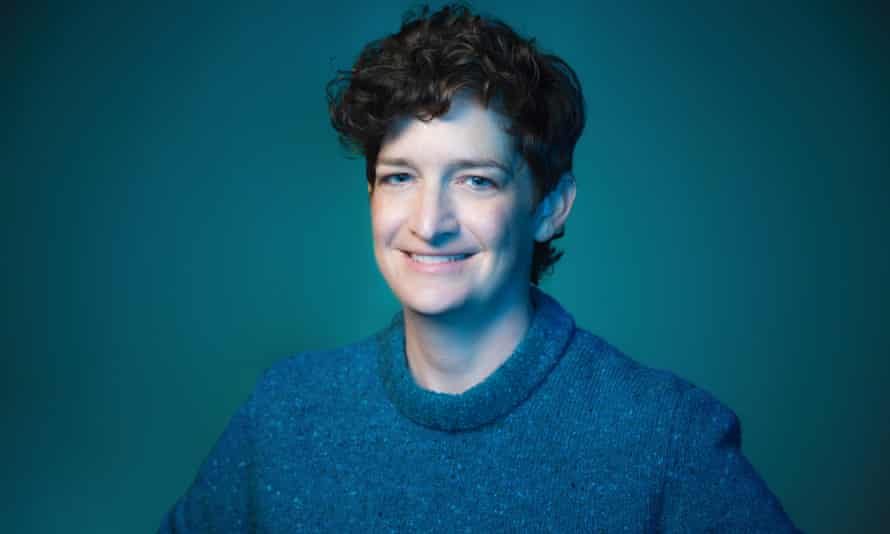I lived like an astronaut for months in isolation | Space
Once upon a time I lived on Mars. Or the closest thing to it. At the time I was a science journalist and not necessarily an obvious choice for the mission. And yet I found myself on it. This was 2012 and Kim Binsted, professor of information and computer sciences at the University of Hawaii, along with Jean Hunter, professor of biological and environmental engineering at Cornell, had put out a call for “almost” astronauts to participate in a four-month “Mars” mission.
Binsted and Hunter wanted a crew who could technically qualify for space flight, according to Nasa, in terms of education and experience. They were also looking for astronaut-like personalities who, according to Binsted, feature “thick skin, a long fuse and an optimistic outlook”. Nearly 700 people applied worldwide.
Somehow they chose me and so, between April and August 2013, I lived with five other not-really-astronauts in isolation, all of us making various Martian concessions, like mostly bathing with wet wipes, forgoing real-time social media and zero access to fresh fruits or vegetables.
We lived inside a large, white geodesic dome off an access road at 8,000ft on the Hawaiian volcano of Mauna Loa. The scene was very red, very rocky. Very Mars. There was limited electricity and water. We could only leave the dome wearing bulky, cumbersome, space suit-like outerwear. While we had an emergency mobile phone, our sole regular contact with Earth was through email. And since Mars is extremely far away, our email transmissions were delayed by 20 minutes each way to mimic the actual communication lag to be experienced by Martian explorers. It wasn’t your typical Hawaiian vacation.
All for science, though. Binsted and Hunter’s main research question regarding food was this: might it make sense to allow astronauts to cook their own meals once they’ve landed on Mars? Data has shown that astronauts on six-month missions on the International Space Station eat less over time and lose weight, making them more prone to illness and injury. Binsted and Hunter wanted to measure the importance of cooking, and meals in isolation more generally – how food affects a crew’s physical, mental and social health.
On Earth it might be obvious that food is more than just sustenance for a body, that it plays a psychological, social and cultural role, and that it nourishes the spirit and our relationships with others. But to ask complex questions about the role of food on a Mars mission and base a brand-new Mars analogue around these questions? It’s pretty radical, actually. And so, for this food study, we ate a combination of pre-prepared meals, as well as meals we cooked in our small yet well-equipped Martian kitchen.
We logged the changes in our appetites and weights and took tests to measure our ability to breathe through our noses and to identify odours, all of which relate to hunger and food satisfaction. There were nearly a dozen other experiments, too – trying out antimicrobial socks, tests of mental acuity, behavioural surveys, the list goes on. We lived and breathed survey questions for four months. Four months of isolation. Four months of the same people, same seats at the table, same clothes, same smells, same routines, same view outside the one-and-only window looking out on to the same rocks. No sunshine on our skin, no fresh air in our lungs. I don’t want to overstate the difficulty – we were never in any mortal danger. But there were some aspects of the experience that I did find trying.
I missed face-to-face conversations with my wife. I longed for a change of scene and better indoor lighting. A swim in the ocean or a pool. A walk in the woods.

We were warned about the effects of isolation in small and large ways. The small ways: brief mentions during our pre-mission conference calls about tensions that arise between crew members and their friends, family and mission support back home. The large ways: the multiple hours-long discussions to discover what our breaking points would be. Would we abandon the mission if we got a sudden job offer? If someone back home got sick? If someone died? If we got sick? How sick? Mentally? Physically? If we lost faith in our crewmates or the project entirely? And how did we plan to manage the well- documented challenges of isolation? These challenges included, but were not limited to, something scientists have called “third-quarter” syndrome, in which the itch to be anywhere but inside the dome with your five best friends flares hot when the end is in sight but not quite within reach. Diaries from Arctic and Antarctic expeditions suggest that it’s a special time, three-quarters into your mission. You’ve become used to your routines and found a rhythm, but the hard reality of being cut off from others, the demands of your duties and…
Read More:I lived like an astronaut for months in isolation | Space
